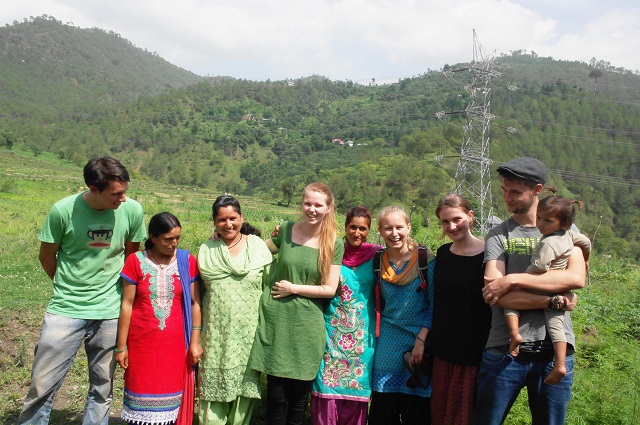
After an eight-hour bus journey starting from New Delhi, we arrived in Shimla on a Sunday morning. To acclimate to the change and region, we spend our first day exploring the city that was once the summer capital of the British in India. Wandering through the city centre’s distinctive grand old buildings, charming iron lamp posts and Anglo-Saxon names, our journey took us to the Christ Church, the Himachal Pradesh University, the Indian Institute of Advanced Study and to the Indian Coffee House – a cozy and vintage place for food and drinks.
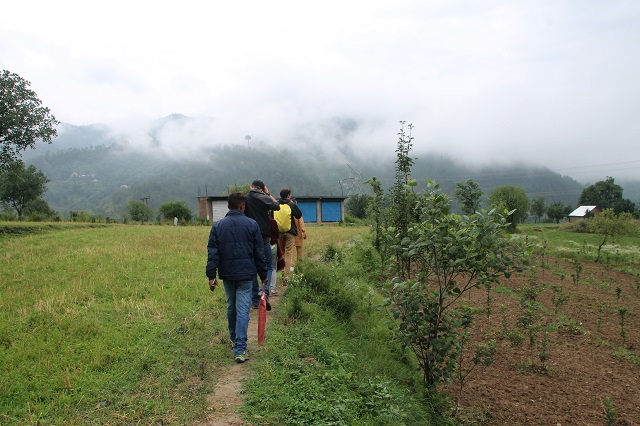
Walking from one field to another
Next morning, we left for Jhungi, a village located in the Mandi district of Himachal Pradesh. Surrounded with beautiful greenery, Jhungi has several temples built of wood. Even though the artistic carving is an important local feature, it is at risk of extinction – primarily because of the increasing tendency toward the use of other materials for construction in recent years. In a bid to revive carving, the Organic Farming Association of India (OFAI) supports local craftsmen by promoting their work and highlighting the value of using local material. “This is how the idea of a farmers’ center came to life,” explained Ashish Gupta of OFAI. “Built with sustainable materials, the farmers’ center provides a space for community members to come together and exchange craftsmanship. It is a place of the community and for the community.”
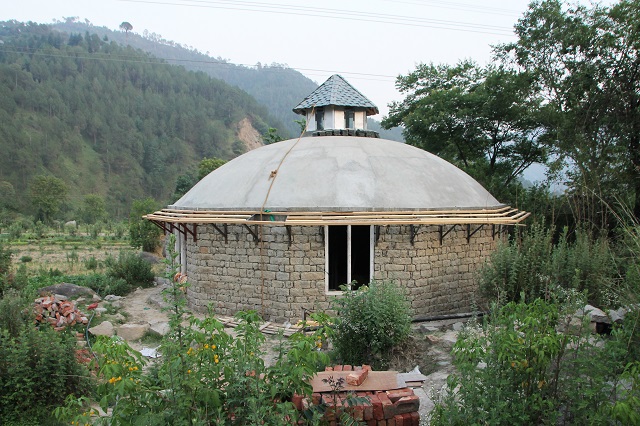
A Farmers’ Center
On the third day, we stopped at several farms and saw local agricultural practices that have been existent for centuries and have been a key source of livelihood.
On one such visit, we met Vikram and Rajani Rawat, who have an apple orchard in Kalasan. Mr. Rawat is one of the most experienced apple farmers in the area who has gained knowledge and skills on apple farming through self-study and experimentation. Known for being diligent, the couple has established a demonstration farm for apple growers. They mentor farmers and help them earn well. The couple is also engaged in vegetable farming and grow not only seasonal but also exotic varieties.
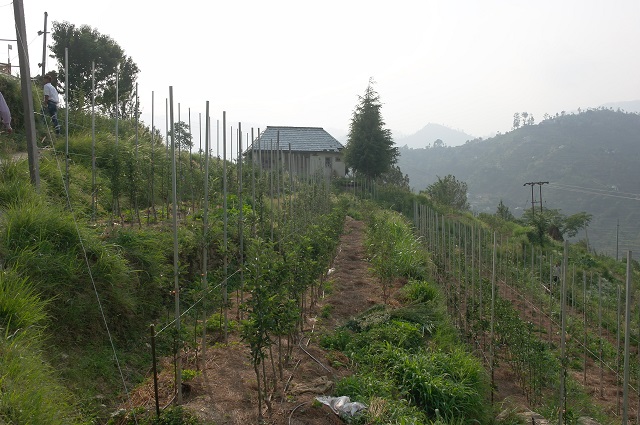
Rawats’ farm
The fourth day of the visit was about meeting various local artisans to understand the social and economic structure of a traditional village. First by car and then on narrow footpaths we made our way to a bamboo craftsman who among other things builds small models of temples, mainly for private customers. We were invited to watch the precise handicraft using customized tools that are used to carve bamboo.
Walking further through the fields we continued our way to a traditional potter in Togra. Welcomed by an old potter, who makes bowls, jugs and other household items using locally available clay, we got an opportunity to watch the entire process of pottery making.
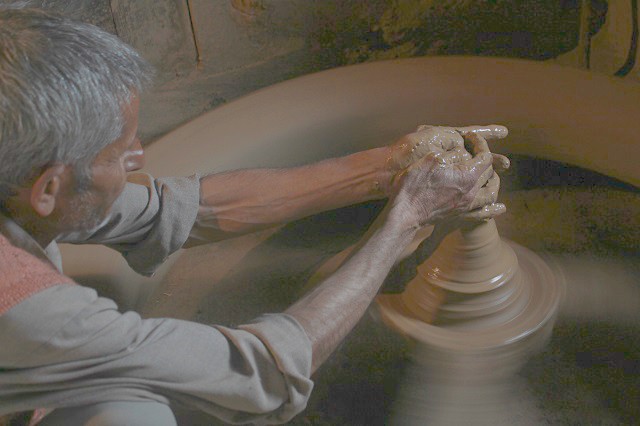
A potter demonstrating his craft
While describing the method, the potter told us that he was one of few left in the area who was making an effort to preserve the age-old tradition and the art of pottery. He was however skeptical about the future of this traditional craft as mass-produced household articles have become increasingly popular in his area.
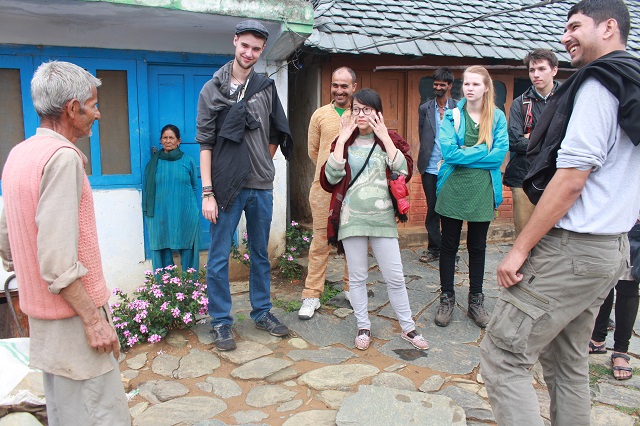
In conversation with a local potter
Amid light drizzle, we walked further to a traditional blacksmith, who, along with four other men, was hammering hot iron on an anvil to form a hoe out of it, an important tool for local farmers. The day finally ended with a visit to a watermill, a traditional mill made of wood, stone and clay that converts the energy of flowing water into power. Many farmers from nearby villages use the watermill to grind their grain. Besides, the watermill also contributes toward producing green renewable energy.
The final day of the trip took us to village Pangana, where we first visited a local panchayat (Village council) and then to a nearby government school. At the school we got a chance to interact with dozens of students, who were curious to know about us, our language and the differences between India and Germany.
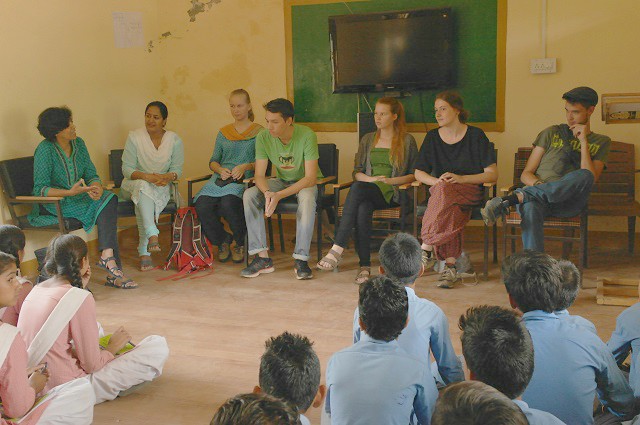
Overall, the entire field trip experience was very enriching. It provided us an excellent opportunity to visit different villages, interact with local residents and gain first-hand experience of local livelihood practices including farming. It was an unforgettable experience for all of us.
Trang Nguyen is one of the 12 young volunteers, who are part of the weltwärts programme, an initiative founded in 2008 by the German Federal Ministry for Economic Cooperation and Development [BMZ]. Welthungerhilfe has been hosting weltwärts volunteers since 2014. The photos are captured by Trang Nguyen, Helen Karnatz and Katharina Kern.



